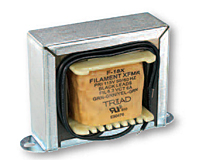This is a Brother EM711 typewriter. It would randomly reboot as if you had turned the power off then on. Now it's totally dead. Took it apart and checked the transformer.

there is 120V on the black and white wires going up to the transformer, but only like 30 mV coming out on the two red wires on the left. Bad transformer? And where do I find a replacement? Found nothing by searching those numbers and have no idea what the output should be.
there is 120V on the black and white wires going up to the transformer, but only like 30 mV coming out on the two red wires on the left. Bad transformer? And where do I find a replacement? Found nothing by searching those numbers and have no idea what the output should be.




